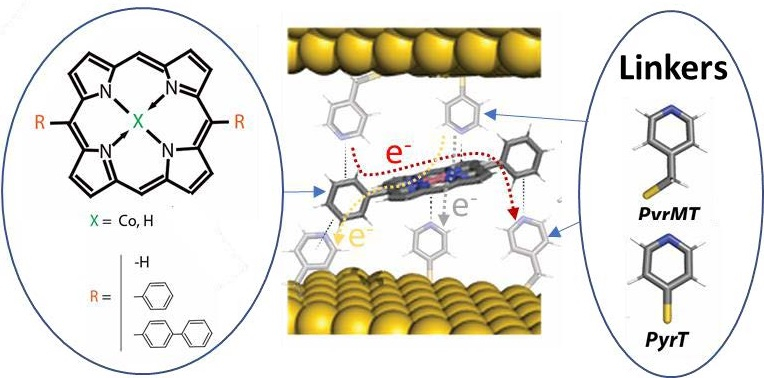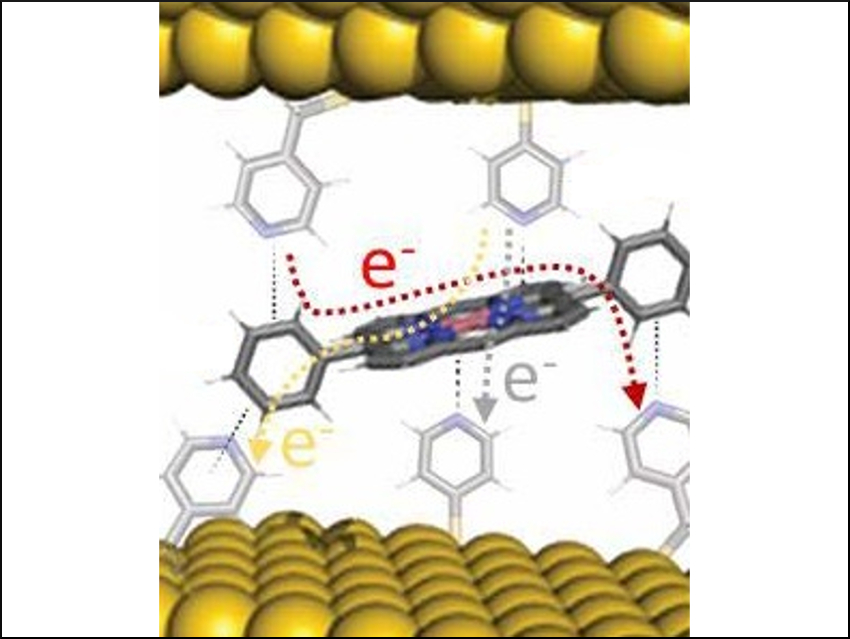Supramolecular electronics bridges the gap between molecular electronics and conducting polymers. Nature uses supramolecular electronics in the form of arrays of axially coordinated metalloporphyrins to create highly efficient molecular conduits. Metalloporphyrins have been extensively studied as molecular wires and have useful properties such as high chemical stability, the ability to include different metal centers, and a rich supramolecular chemistry.
Ismael Díez-Pérez, King’s College London, UK, Eliseo Ruiz, University of Barcelona, Spain, and colleagues have incorporated porphyrin-based supramolecular moieties into a nanoscale gap between scanning tunneling microscopy (STM) electrodes (pictured). They investigated the conductance of these single molecules under mechanical stress after systematically changing both the coordinating ligands and the porphyrin’s substitution. The team used unsubstituted porphyrins as well as porphyrins with 5,15‐diphenyl (DDP) and 5,15‐dibisphenyl (DBP) substituents, together with thiol-functionalized electrodes with two different pyridine compounds as linkers, i.e., a pyridine‐4‐yl‐methanethiol (PyrMT) or 4‐pyridinethiol (PyrT).
The results showed that changes in the final supramolecular wire structure induced by small chemical modifications and/or mechanical perturbation can lead to significant changes in conductance. The structures built with the flexible PyrMT linker, for example, are two orders of magnitude more conductive than those with the more rigid PyrT due to π‐π stacking. According to the researchers, this type of porphyrin‐based supramolecular wire could also be used to study the mechanisms of charge transport in complex biomolecular structures.

- Tuning Single‐Molecule Conductance in Metalloporphyrin‐Based Wires via Supramolecular Interactions,
Albert C. Aragonès, Alejandro Martín‐Rodríguez, Daniel Aravena, Josep Puigmartí‐Luis, David B. Amabilino, Núria Aliaga‐Alcalde, Arántzazu González‐Campo, Eliseo Ruiz, Ismael Díez‐Pérez,
Angew. Chem. Int. Ed. 2020.
https://doi.org/10.1002/anie.202007237




